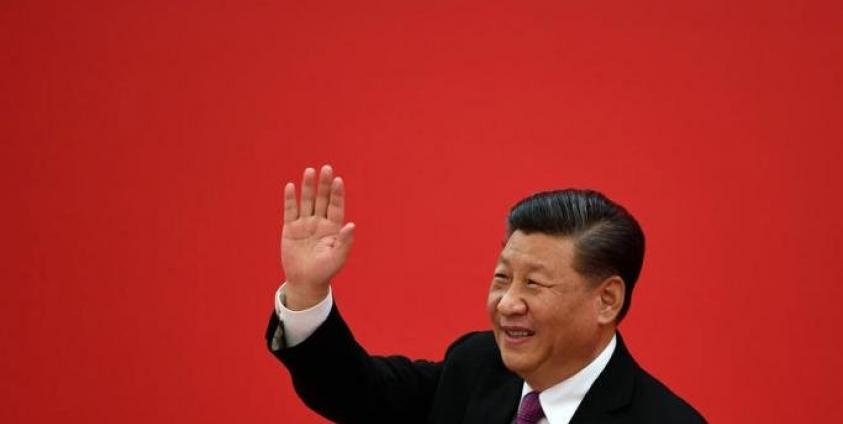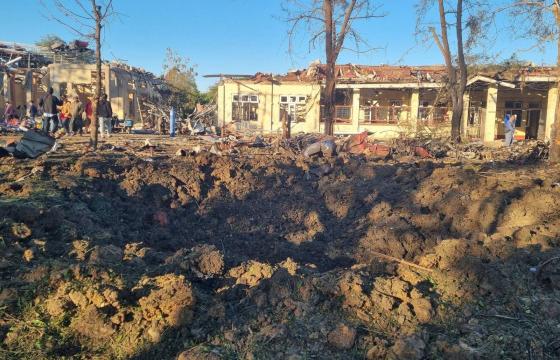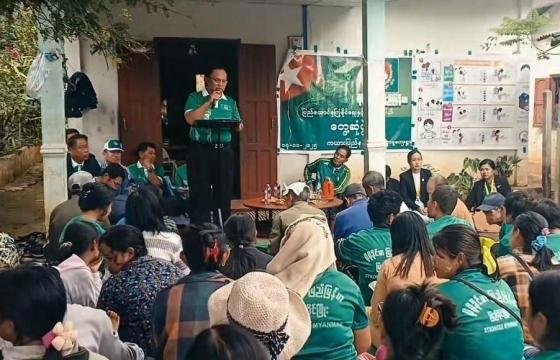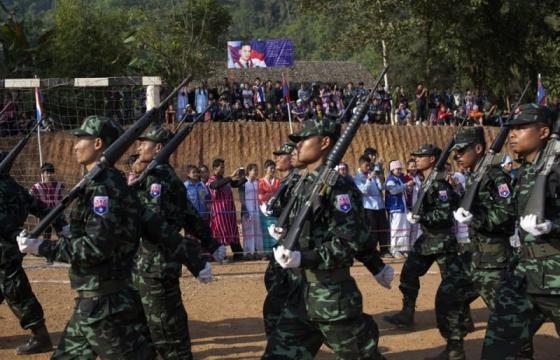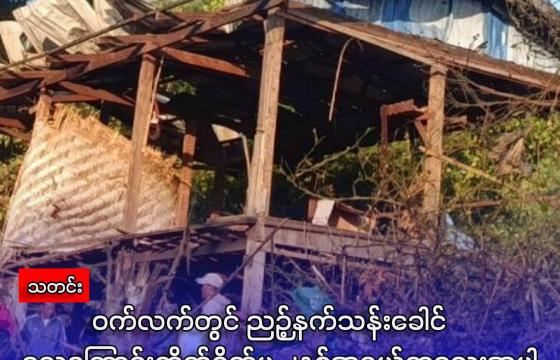With Chinese President Xi Jinping poised to visit Myanmar this week, questions surround what will be discussed in the closed-door sessions with Myanmar State Counsellor Aung San Suu Kyi and the Military chief Senior General Min Aung Hlaing, given the importance of the country for Beijing’s strategic outreach.
Political pundits claim there is a growing friendship between the two countries in part because of the mutually beneficial projects China is rolling out but also because of what is viewed rightly or wrongly as a cooling relationship between Myanmar and the west in the wake of the 2017 Rakhine crisis and the ICJ “genocide” case begun last month in the Hague.
Myanmar has many reasons to look to their neighbour for support but also has experience that should set off warning bells, both for the Nay Pyi Taw government and for people affected at the grassroots level by Chinese projects in the country, according to observers.
The Myitsone Dam project in Kachin State was put on hold in 2011 by the former government of Thein Sein following local dismay and community displacement. Protests have been held over the Chinese-run copper mine in Letpaduang that saw farmers pushed off their land and damage to the environment.
Both these projects cast a long shadow over Myanmar-China relations and put State Counsellor Aung San Suu Kyi in a quandary, indicated in the mixed messages she has given regarding the ventures.
Although Myitsone is a hot-button topic, Suu Kyi did not publicly mention it on her visit to Myitkyina, Kachin State last week ahead of Xi’s visit to discuss China-Myanmar relations and opportunities.
PUSHING THE NEW SILK ROAD
Top of Xi’s agenda will be Myanmar’s role in facilitating a corridor under the Belt and Road Initiative (BRI) launched in 2013 shortly after he came to power. The BRI is a broad framework of activities, led mostly by Chinese provincial governments and state-owned enterprises (SOEs), that seek to address surpluses of capital and labour in China.
This trillion dollar “New Silk Road” is both a showcase of China’s infrastructure development outreach to the world and a desperate bid to look for investment, employment and profit abroad as China’s economy slows - and a crucial part of the Communist Party of China’s game plan to consolidate and hang onto power in the Middle Kingdom with Xi at the helm.
Myanmar’s place in Beijing’s strategic world vision should not be underestimated – hence the reason why Chinese President Xi’s visit at the dawn of the 2020s is so important.
Beijing’s main focus appears to be the rolling out of the BRI China-Myanmar Economic Corridor (CMEC), publicly portrayed as a win-win situation for both countries, a powerful combination of pipelines, rail, road, infrastructure, special economic zones and a deep-sea port.
In addition, Chinese investment outreach in Myanmar includes a mix of state-driven and private company investment initiatives. These include the the development of the Shwe Kokko ‘special economic zone’ in the Kayin Border Guard Force area of Kayin State. It is being developed by Myanmar Yatai International Holding Group, a private company based in Hong Kong. The project has faced widespread criticism for illegally employing Chinese workers, running illegal gambling and other questionable activities.
UNBALANCED INITIATIVE
What is clear is that Beijing has far more to gain than Myanmar with the development of the BRI and CMEC. Many countries, including Myanmar, Pakistan, and Sri Lanka, have fallen for the Chinese embrace because at surface level the BRI offers development and trade opportunities at a time when local coffers are stretched and amidst the realization that the world’s second-largest economy has something to offer, not least the funding for development projects.
Beijing has also managed to gain opportunity when Myanmar was caught on the back-foot internationally with its handling of the Rakhine crisis that resulted in an exodus of over 700,000 Rohingya Muslims to Bangladesh that eventually led to a Myanmar delegation having to defend their handling of the crisis in the Hague.
In simple terms, Myanmar’s fallout with the west has allowed the Chinese government to step in and refocus their relationship and to essentially repackage projects in Myanmar under the new CMEC, the key mechanism for the BRI in Myanmar.
Having learnt from previous experiences in Myanmar, Chinese investors, the Yunnan provincial government, and the central Chinese government have made efforts to publicise the positive impacts of the BRI. However, the CMEC projects have not avoided the challenges facing foreign investment in Myanmar and progress has been slow, according to a recent report by the Trans National Institute (TNI).
STRATEGIC PORT
All that is needed is a glance at the map to see how the CMEC and its outlet into the Indian Ocean will benefit China in terms of oil, gas and supplies and strategic depth.
The CMEC corridor helps China with its “Malacca Dilemma” – finding a shorter communications alternative to the Malacca Strait and the potential for this shipping route to be held hostage should hostilities ever break out with the United States.
Kyaukphyu deep seaport in Rakhine State is viewed as the jewel in the crown of the CMEC, the second trans-national BRI corridor after the China Pakistan Economic Corridor, according to the TNI report entitled, “Selling The Silk Road Spirit: China’s Belt and Road Initiative in Myanmar”.
The Kyaukphyu deep-sea port and related Special Economic Zone (SEZ), together with the oil and gas pipelines and planned communications infrastructure, high-speed train, and an expanding corridor of Chinese entities and influence matter to Beijing.
The construction of the Kyaukphyu deep-sea port has been the subject of serious negotiations. In 2018, Myanmar succeeded in slashing the cost of the port from $7.2bn to $1.3bn, although public details of the framework deal, as with other Chinese-led projects in the country, are said to be scant.
China already holds the largest share, around $4bn or 40 per cent of Myanmar's foreign debt.
Billions of cubic metres of gas and millions of barrels of oil from off-shore rigs are already pumped each year from the Myanmar port across the country to southern China.
RAFT OF PROJECTS
The CMEC is still very much a work in progress. Up to 40 projects were reportedly proposed by the Chinese government under the CMEC corridor but only nine have been agreed with the Myanmar side, according to TNI. Only three of these nine projects have been confirmed publicly, namely the Kyauk Phyu SEZ, the development of three border economic zones in Kachin and Shan states and the Muse-Mandalay Railway.
It should be noted that both the Kyauk Phyu SEZ and the Muse-Mandalay Railway predate the BRI. Without details of the other six projects, it is difficult to assess the full scope and impact of the CMEC, and the initiative continues to be characterised by a lack of transparency, according to TNI.
Yet what is clear is that the port and the pipeline and communications infrastructure come with a cost to local people displaced or negatively affected by the massive project. In addition, Chinese business and expat presence is growing in the corridor and in Mandalay, long a city where historically Chinese immigrants have put down roots.
As Myanmar commentators have noted, all this needs to be assessed in terms of how it will affect Myanmar long term, decades hence.
MYANMAR ECONOMIST
In Myanmar, renowned economist U Myint has deeply studied the BRI and its potential effects on his country and calls for a more collaborative approach that includes the voices of local people who could be ousted or negatively affected – as seen in the controversial rollout of the oil and gas pipeline, and the skewed original plan for the Myitsone Dam project that saw China holding the lion’s share of the deal.
The track record for including local communities in the negotiation process for Chinese investment projects has not been good.
It is understandable that the current Myanmar government is leaning towards neighbouring China when it comes to development options, investment, border issues and help in resolving the intractable peace process.
But Myanmar’s leaders may be waking up to the challenges of dealing with China in a way that safeguards Myanmar interests.
WHAT IS GOOD FOR MYANMAR?
Clearly, Myanmar needs to do some soul-searching when weighing up the magnitude of what the BRI and CMEC will mean for Myanmar decades or even a century down the line, once a substantial part of the country’s territory become effectively Chinese business and residential regions – an important sovereignty question that few if any are considering.
Chinese President Xi’s visit is important because of what Myanmar’s strategic importance to Beijing.
The question, however, that will be asked is, with all that is on the table, what is good for Myanmar?
<><><>
Caption :
China's President Xi Jinping. Photo: EPA

